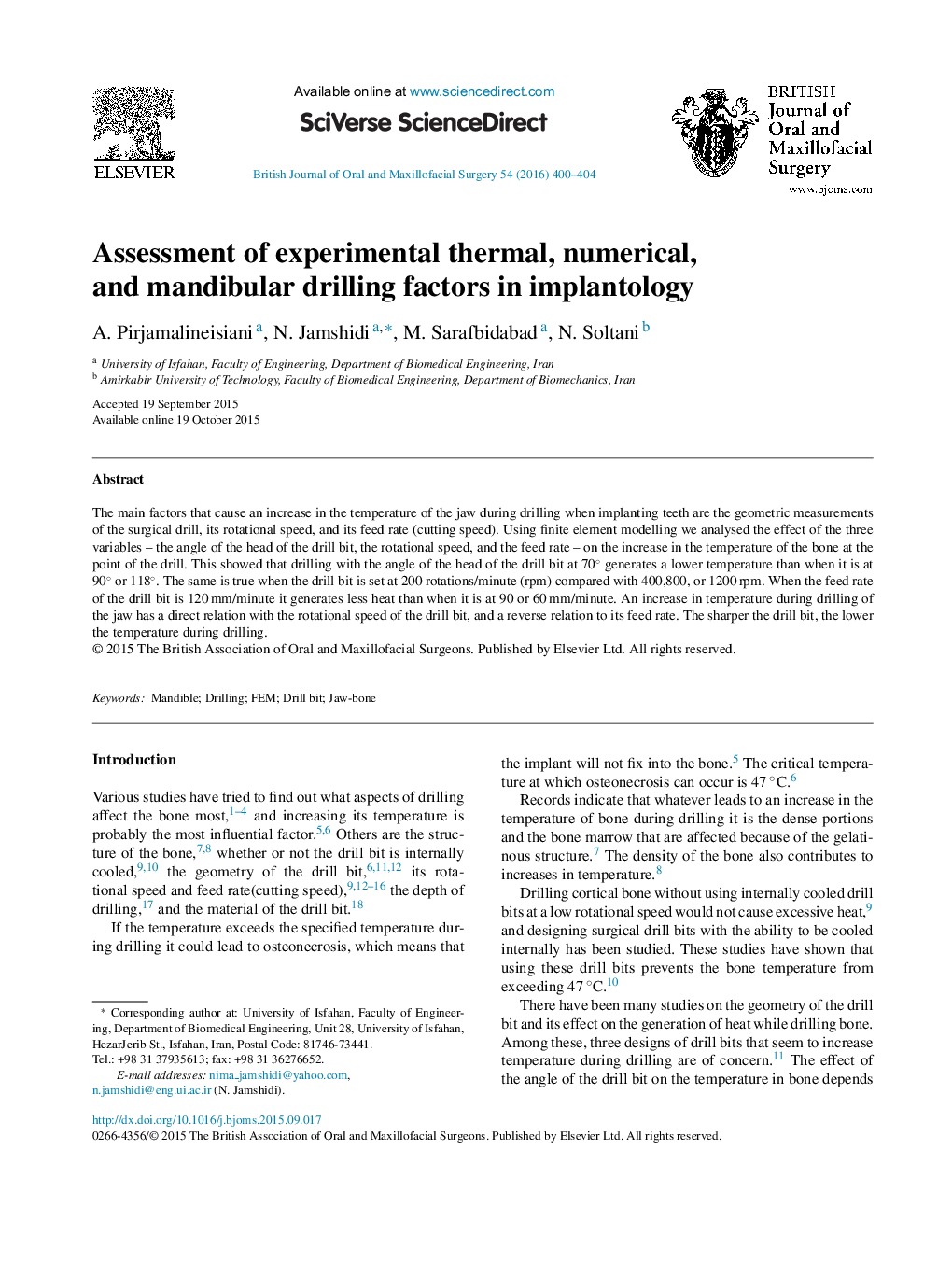| Article ID | Journal | Published Year | Pages | File Type |
|---|---|---|---|---|
| 3122988 | British Journal of Oral and Maxillofacial Surgery | 2016 | 5 Pages |
The main factors that cause an increase in the temperature of the jaw during drilling when implanting teeth are the geometric measurements of the surgical drill, its rotational speed, and its feed rate (cutting speed). Using finite element modelling we analysed the effect of the three variables – the angle of the head of the drill bit, the rotational speed, and the feed rate – on the increase in the temperature of the bone at the point of the drill. This showed that drilling with the angle of the head of the drill bit at 70° generates a lower temperature than when it is at 90° or 118°. The same is true when the drill bit is set at 200 rotations/minute (rpm) compared with 400,800, or 1200 rpm. When the feed rate of the drill bit is 120 mm/minute it generates less heat than when it is at 90 or 60 mm/minute. An increase in temperature during drilling of the jaw has a direct relation with the rotational speed of the drill bit, and a reverse relation to its feed rate. The sharper the drill bit, the lower the temperature during drilling.
